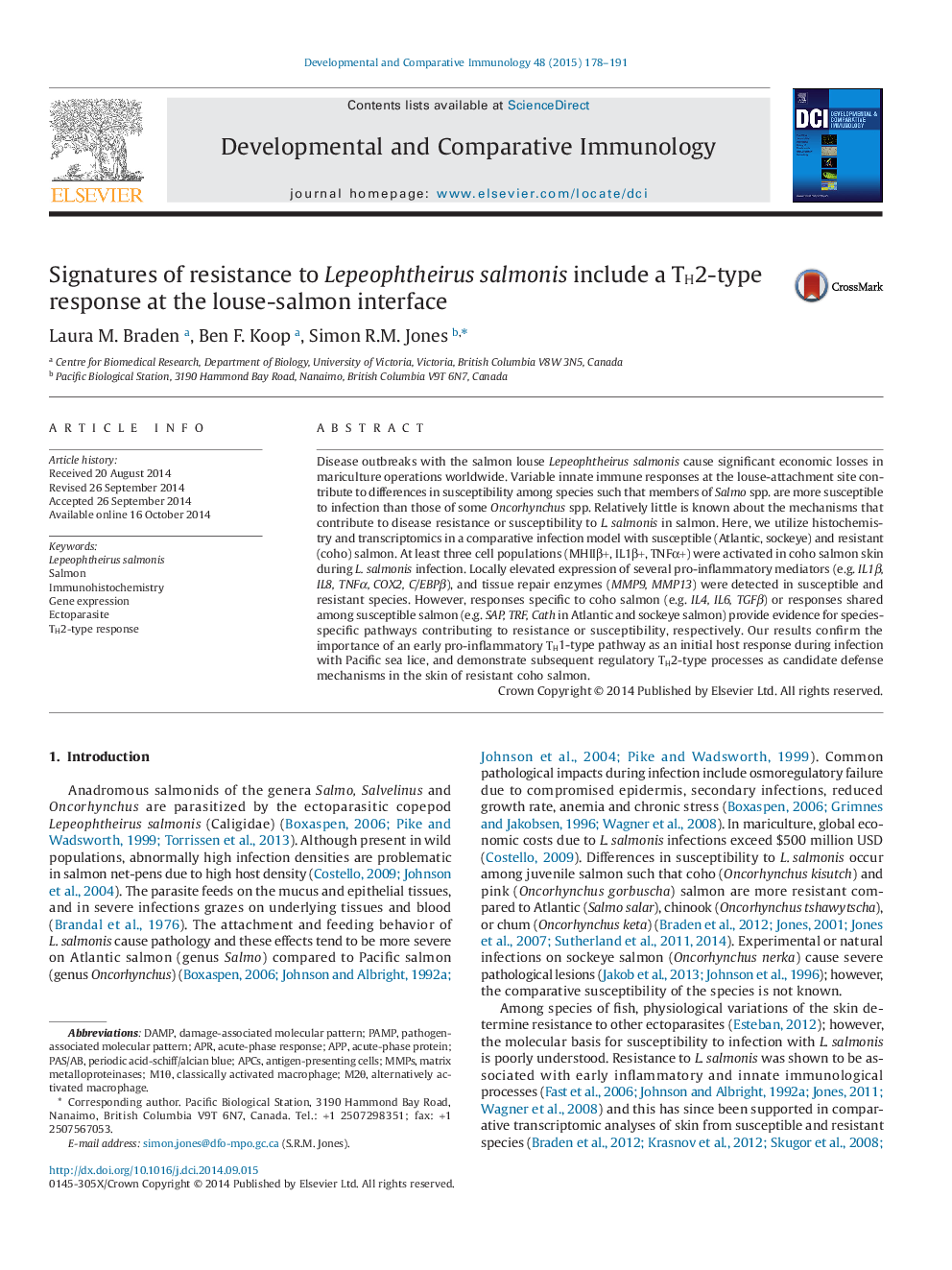| Article ID | Journal | Published Year | Pages | File Type |
|---|---|---|---|---|
| 10971547 | Developmental & Comparative Immunology | 2015 | 14 Pages |
Abstract
Disease outbreaks with the salmon louse Lepeophtheirus salmonis cause significant economic losses in mariculture operations worldwide. Variable innate immune responses at the louse-attachment site contribute to differences in susceptibility among species such that members of Salmo spp. are more susceptible to infection than those of some Oncorhynchus spp. Relatively little is known about the mechanisms that contribute to disease resistance or susceptibility to L.âsalmonis in salmon. Here, we utilize histochemistry and transcriptomics in a comparative infection model with susceptible (Atlantic, sockeye) and resistant (coho) salmon. At least three cell populations (MHIIβ+, IL1β+, TNFα+) were activated in coho salmon skin during L.âsalmonis infection. Locally elevated expression of several pro-inflammatory mediators (e.g. IL1β, IL8, TNFα, COX2, C/EBPβ), and tissue repair enzymes (MMP9, MMP13) were detected in susceptible and resistant species. However, responses specific to coho salmon (e.g. IL4, IL6, TGFβ) or responses shared among susceptible salmon (e.g. SAP, TRF, Cath in Atlantic and sockeye salmon) provide evidence for species-specific pathways contributing to resistance or susceptibility, respectively. Our results confirm the importance of an early pro-inflammatory TH1-type pathway as an initial host response during infection with Pacific sea lice, and demonstrate subsequent regulatory TH2-type processes as candidate defense mechanisms in the skin of resistant coho salmon.
Keywords
EctoparasiteMmpsAPCsDAMPAPPPAMPantigen-presenting cellsAprdamage-associated molecular patternpathogen-associated molecular patternImmunohistochemistryGene expressionSalmonLepeophtheirus salmonisalternatively activated macrophageclassically activated macrophageMatrix metalloproteinasesAcute-phase responseAcute-phase protein
Related Topics
Life Sciences
Biochemistry, Genetics and Molecular Biology
Developmental Biology
Authors
Laura M. Braden, Ben F. Koop, Simon R.M. Jones,
